8 Species of Woodpeckers in Florida (With Pictures)
Last Updated on
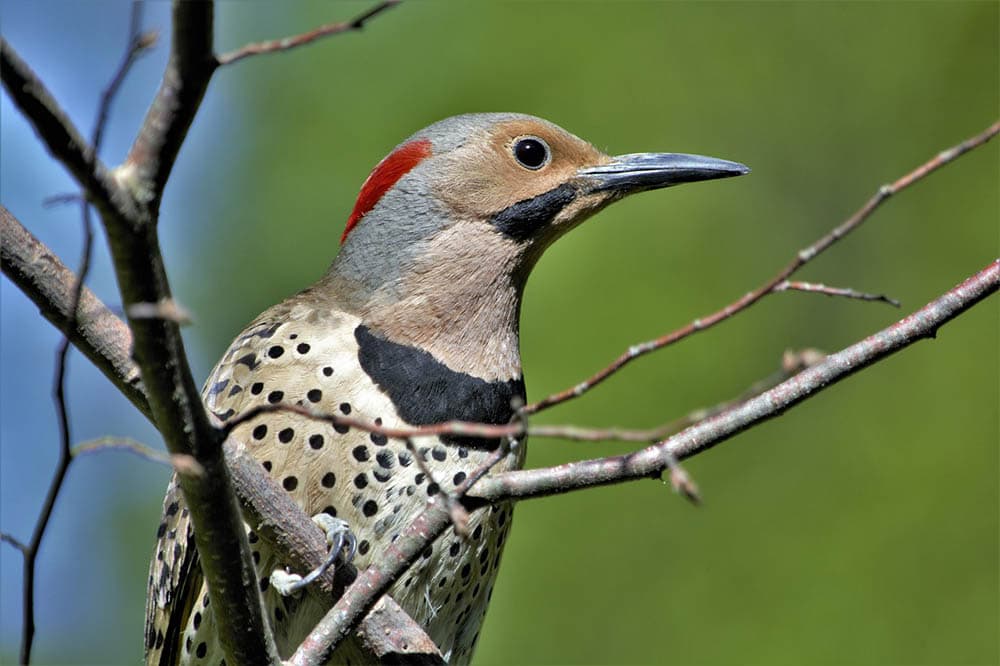
Florida is known for its abundance of wildlife and is an excellent place for bird watching. Included in that wildlife are the many species of woodpeckers. Florida has a massive amount of pine forests throughout the state that attracts woodpeckers year-round.
There are eight species of woodpeckers found in the Sunshine State, and if you live here, it’s not uncommon to see them hammering away on a tree trunk or feeding from your bird feeder. Known as a keystone species, these birds play a huge role in our ecosystem by eating destructive insects. They also create nesting cavities in trees that other birds use that otherwise would not have the ability to do themselves.
In this article, we’ll explore the eight woodpecker species in Florida, and if you live here, you’ll learn how to spot one and even attract them to your Florida backyard.
The 8 Species of Woodpecker in Florida
1. Red-Headed Woodpecker
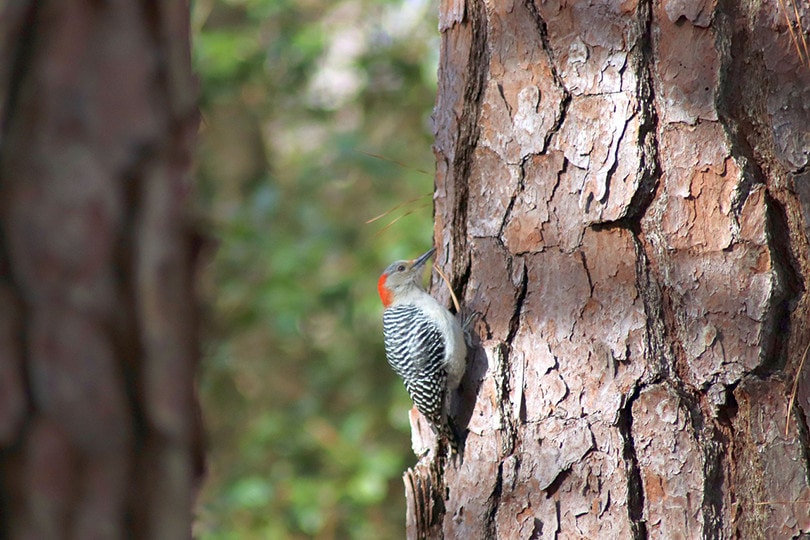
| Scientific name: | Melanerpes erythrocephalus |
| Wingspan: | 5 inches |
| Length: | 3 to 9.8 inches |
The Red-Headed Woodpecker stands true to its name. It has a solid red head, and both males and females have long, chisel-like beaks and a black back with white patches. The belly is also white. The juveniles do not sport the red head yet; their heads are brown, and they have a blackish-brown belly. They have rounded heads and short tails.
These woodpeckers can catch insects in flight and nab them on the ground, in addition to catching them by hammering away at trees. Insects are not the only food item on their menu—they also eat fruits and seeds. They love acorns and beechnuts, and they will store them in tree crevices for a later date.
You can find these woodpeckers year-round in the eastern part of the US, however, their numbers are declining. They are on the 2014 State of the Birds Watch List for being at risk of becoming endangered.
2. Downy Woodpecker

| Scientific name: | Dryobates pubescens |
| Wingspan: | 8 to 11.8 inches |
| Length:5 to 6.7 inches |
5 to 6.7 inches |
The Downy Woodpecker has a chisel-like beak, broad shoulders, and a blocky head. Their posture is straight, as they lean back when perched on a tree trunk. Their beaks are not as long as other species, but they get the job done.
Their colors are black and white with a checkered pattern. The head is striped, with the males sporting a red patch on the back of the head. The back is black with a long white stripe down the middle.
They live year-round in North America in open woodland, along streams and deciduous trees. They are also spotted in backyards, city parks, and orchards.
These woodpeckers eat pesky insects, such as bark beetles, corn earworms, tent caterpillars, and ants. They also fancy grains, berries, and acorns.
You can attract them to your feeders with sunflower seeds and suet. They’ve also been known to drink from hummingbird feeders.
3. Hairy Woodpecker
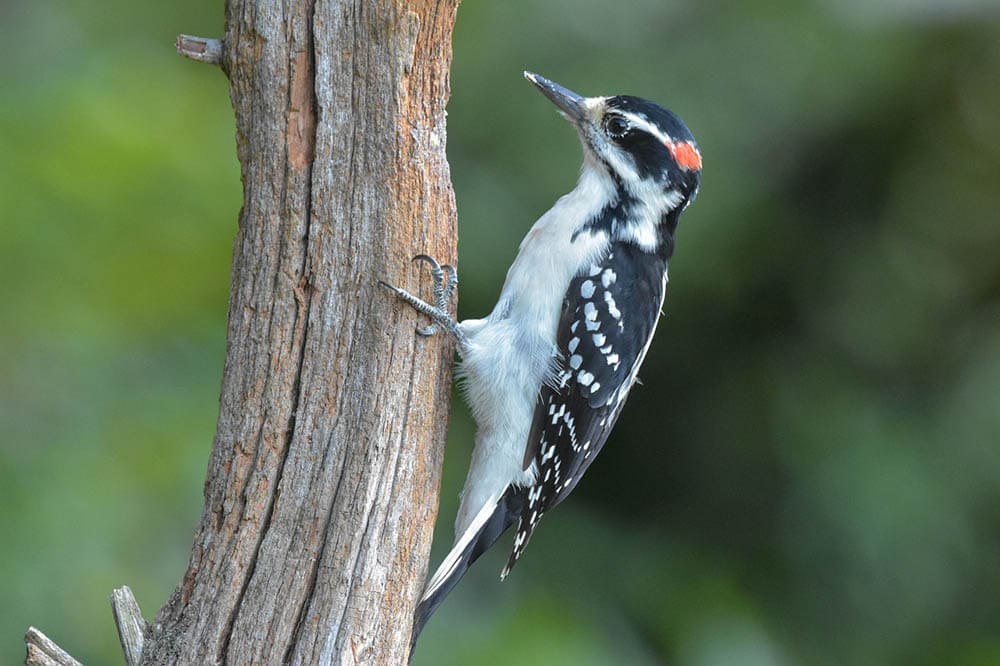
| Scientific name: | Dryobates villosus |
| Wingspan: | 13 to 16 inches |
| Length:5 to 6.7 inches |
7 to 10 inches |
The Hairy Woodpecker has a very long thorn-like beak. It has long and stiff tail feathers to help it balance when leaning back against trees while foraging. They are black and white, and the wings have a black and white checkered pattern. They also have a long white streak down the middle of the back. Males have a red patch on the back of the head, and they look almost identical to the Downy Woodpecker but with longer beaks.
These woodpeckers are found all over the United States year-round, and you can find them in mature forests. You can also spot them in woodlots, cemeteries, suburbs, parks, open woodlands, and recently burned forests.
To attract them, fill your feeders with suet, peanut butter, and black oil sunflower seeds. They will feed from suet cages and platform feeders.
4. Red-Bellied Woodpecker
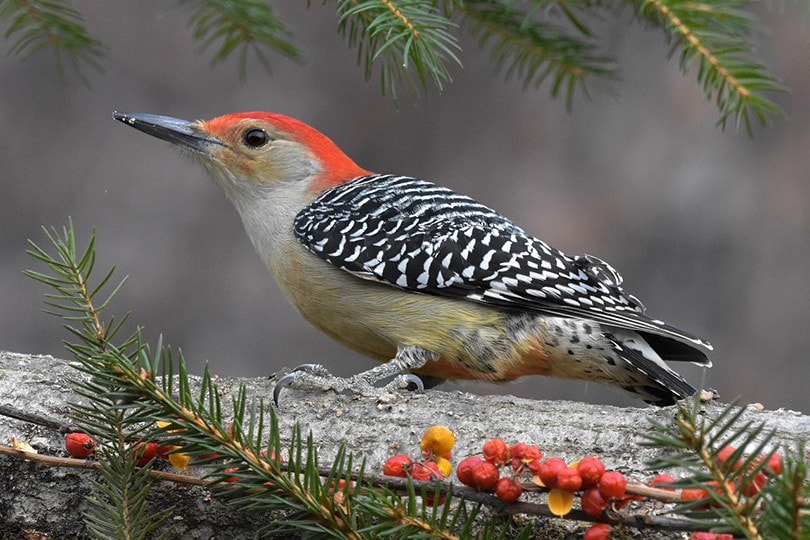
| Scientific name: | Melanerpes carolinus |
| Wingspan: | 13 to 16 inches |
| Length:5 to 6.7 inches |
4 inches |
The Red-Bellied Woodpecker has a round head, pale belly, and a black and white striped back. The males have a red crown and nape, and the females have a red nape but no crown. These species look similar to the Red-Headed Woodpecker, but the Red-headed Woodpecker is mostly black on the back.
These woodpeckers can be found all over the eastern United States year-round and are common in forests. They love woodlands, forests, and wooded suburbs.
Their diet consists of insects, spiders, and arthropods. They will also dine on acorns, nuts, pinecones, and seeds dropped from annual and perennial plants. Fruits, such as oranges, grapes, mangoes, and hackberries, are also a favorite.
If you live in a wooded area, you may have success attracting them to your feeders with peanuts, suet, and sunflower seeds.
5. Red-Cockaded Woodpecker
https://www.instagram.com/p/CWVeY7Kry8O/
| Scientific name: | Dryobates borealis |
| Wingspan: | 2 inches |
| Length:5 to 6.7 inches |
9 to 9.1 inches |
The Red-Cockaded Woodpecker is one of the smallest species with straight, short bills. They are mainly black and white with a big white patch on each cheek. Despite the name, the only red you may see is on the males, as they have a faint red streak on the upper cheek.
These woodpeckers are vocal and forage in small groups. However, it’s hard to find them because they have been on the endangered species list since 1970. It’s estimated that roughly 15,000 clusters of these woodpeckers live in trees ranging from Florida to Virginia, Oklahoma, and Texas.
The reason for their decline is habitat destruction. Old-growth, open understory longleaf pine forests are no longer abundant due to logging, which was their preferred habitat. In Southern Florida, you may see them in bald cypress trees, slash pines, and grassy wetlands.
6. Yellow-Bellied Sapsucker

| Scientific name: | Sphyrapicus varius |
| Wingspan: | 4 to 15.8 inches |
| Length:5 to 6.7 inches |
1 to 8.7 inches |
The Yellow-Bellied Sapsucker is an enterprising woodpecker that drinks leaking sap from trees with their specialized brush-tipped tongue. They are small, stout, and have straight bills. They are mainly black and white with patterned black and white faces. A white strip is seen along the fold of the wing, and males have a red crown and red throat, but females have a red crown with a white throat.
They live in deciduous forests, as well as mixed conifer forests, and breed in Eastern Alaska, Canada, and the Eastern United States. They are the only migratory woodpeckers in Eastern North America. They love young forests, especially those recovering from timbering.
You can find them year-round in Florida. To attract, try a suet feeder, as they don’t usually feed from ordinary feeders. If you have maple trees or young birch in your yard, you increase your chances of attracting them.
7. Northern Flicker

| Scientific name: | Colaptes auratus |
| Wingspan: | 16 to 20 inches |
| Length:5 to 6.7 inches |
11 to 12 inches |
The Northern Flicker is quite large with slim, rounded heads and a down-curved bill. They have long tails that taper to a point at the end. Their bodies are brownish overall with black spots, but you’ll notice a bright-yellow color underneath the wings and tail feathers.
They spend a good amount of time on the ground, and they prefer open habitats near woodlands, trees, parks, and yards. You can find them all over North America and year-round in the United States.
They forage on the ground for ants and beetles, but they also eat seeds and fruits, especially in winter. These birds hammer the ground foraging for ants, and their tongues can reach out 2 inches past the beak to catch prey.
Northern Flickers don’t typically eat from feeders, but you can place a birdbath in your yard that will possibly attract them. If you have an abundance of trees with open ground or live near woods, you may spot these woodpeckers from time to time.
8. Pileated Woodpecker
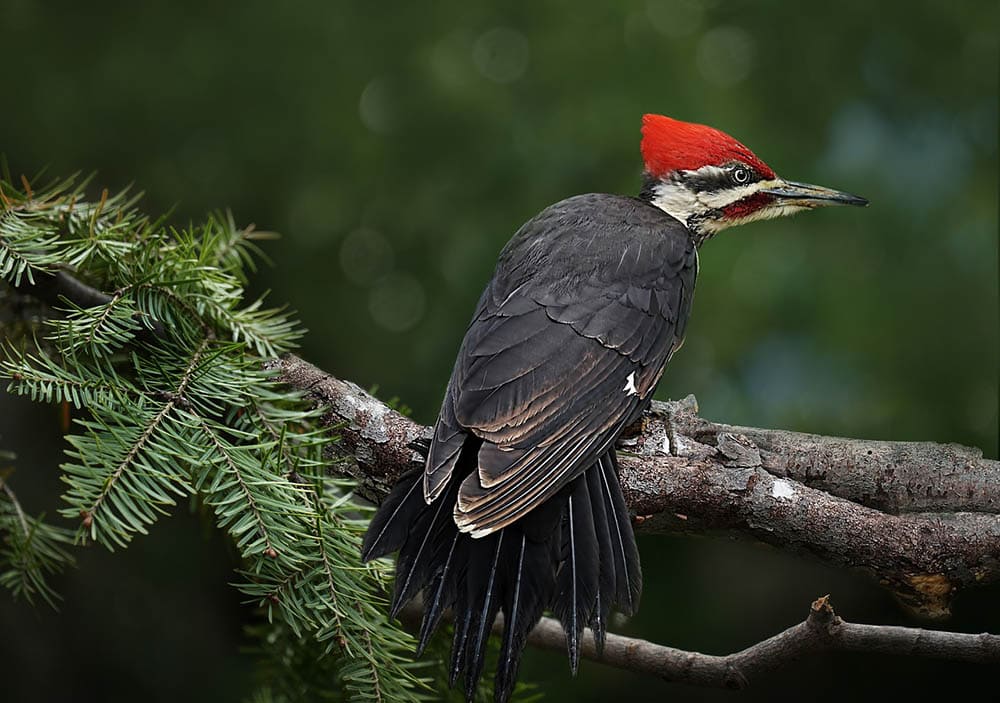
| Scientific name: | Dryocopus pileatus |
| Wingspan: | 26 to 29.5 inches |
| Length:5 to 6.7 inches |
8 to 19.5 inches |
The Pileated Woodpecker is the largest on our list. It has a long neck and triangular, stout chest. The chisel-like beak is about as long as its head, and this woodpecker looks similar to a crow while in flight. The wings are white underneath and are only seen in flight.
These birds are mainly black with white strips on the neck and face, and both males and females have a red crest. However, the males have a red stripe on their cheeks, while the females do not.
They are seen in the Eastern US as well as Canada. They prefer conifer and mixed forests with deciduous trees, and in the southeast, you can find them in swamps and suburbs.
Their main food includes carpenter ants, but they also eat other types of ants, grasshoppers, caterpillars, cockroaches, and budworms. They’ll also eat fruits and nuts.
They will eat from feeders in Florida backyards filled with suet. They also are attracted to dead or dying trees, so if you have any near or around your home, you may just spot one.

Conclusion
We hope you’ve enjoyed this article on the eight species of woodpeckers in Florida. We also hope you’ve learned something new about woodpeckers, and if so inclined, we especially hope you can attract them to your Florida backyard. With the right food and feeder, you should be able to attract them so that you can personally observe their beauty up close.
- Related Read: 8 Species of Woodpeckers in Alabama (With Pictures)
Featured Image Credit: Scottslm, Pixabay
About the Author Rachel Giordano
Related Articles:
Monocular vs Telescope: Differences Explained (With Pictures)
10 Types of Hummingbirds in Arkansas (With Pictures)
8 Types of Hummingbirds in Nebraska (With Pictures)
5 Types of Hummingbirds in Idaho (With Pictures)
3 Types of Hummingbirds in Mississippi (With Pictures)
8 Types of Hummingbirds in Kansas (With Pictures)
5 Types of Hummingbirds in West Virginia (With Pictures)
5 Types of Hummingbirds in Ohio (With Pictures)
